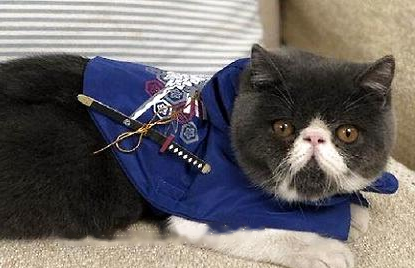How does cat training work? Contrary to what we usually think, cats are actually receptive and sensitive to training . But keep in mind that cats are different from dogs, they think differently and require different training rules. The foundation of effective training for cats is understanding how they think. The cat's world is more three-dimensional.

Cat training: unconscious training
You may not realize that your kitten has responded to your unintentional training. Does it fly into the kitchen when it hears the sound of a can being opened? If it does, that means it already knows that the sound heralds a good meal. In the early 20th century, Russian biologist Ivan Pavlov found in his study of dog behavior that when a bell was rang while feeding the dog food, the dog would drool after hearing the bell ringing.
Cat Training: Using Rewards and Punishments
Cats Use Rewards and Punishments Respond, because they are part of nature, such as patience to round up the reward - the prey. Similarly, in the early morning when a cat wants to eat, it will paw your face first, and if you don't move, it will hit you lightly, then hard; if you still lie still, it will hit hard. Hit you, and in the end its patience will pay off.
Cats learn to recognize different sounds from an early age, and they have great articulation skills. It can make simple grunts, more difficult meows, and fierce hissing and purrs. Although cats have trouble learning to understand human prophecies, whether it's a soft sound of a reward or a reprimand. You might as well add a stern no to your punishment, and a slow no will restrain the kitten's behavior
Cat training: how to get started
The active shorthair learns faster than the silent longhair. Kittens lack attention, while older cats are not interested in training. Four-month-old cats are the easiest to train, but only cats who are accustomed to management are willing to do so. 1-2 minutes of training is the most suitable, 5 minutes is a bit long.
“Clicker training and name training
Click Acoustic clicker training is a form of positive reinforcement training. Let the gadget in your hand click and the colleague feed the cat, and the sound will become the flag signal, giving the cat a quick feedback: what it should be doing.
Choosing the right time to click is the key to training. Feed the cat first, and when it starts to eat, pair it with a click. After repeated training, you can attract a cat's attention simply by shaking the clicker to make a sound. Shaking the bottle with the pills is also a good idea, and making a sound by shaking the bottle immediately after giving the cat food.
You can also call the cat's name when you reward it, and you can attract its attention by calling its name.
Cat Training: Keep the Prize at Hand
If using For clicker training, read the instructions carefully to understand how and when to use it. Timing is of the essence, too early or too late can increase the difficulty of training.
Keep food close at hand. Choose your cat's favorite, tasty, meaty baby food to inspire your cat to paw up or some other paw training action.
Hands Up Training
This is actually a skill training - easy and fun for cats. You'll need a provocative toy, such as a small feather attached to a stick with a short cord. The goal is to get your cat to alternate paws.
Suppose the kitten is named Fatty. Let him sit first, then keep shaking the toy on top of his head, and when he raises his front paws to touch the little toy, quickly say, Big fat, raise your hand, and give the cat food as a reward. If using a clicker, click a few times after giving the cat food.
When Big Fat realizes that raise your hand can get a reward, as long as you say raise your hand in the future, it will happily raise its front paws . Gradually stop using the toy, just stretch your hand over its head.
![[Dog Training 5] The training method of pet dog dining etiquette](/static/img/12192/12192_1.jpg)




